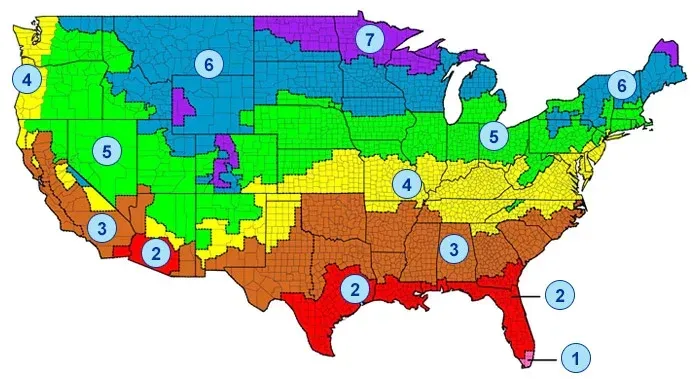Beaverton Insulation Pros
360-773-2422
Insulation Installation Services
R-Value and The PNW
In the Pacific Northwest, where we get a taste of all four seasons, having the right insulation R-values is like having a trusty umbrella—it keeps you prepared for whatever weather comes your way. From chilly winters with rain that seems to last forever to those rare scorchers in summer when the sun decides to show up, insulation plays a crucial role. It helps trap heat indoors during those cold snaps, so you're not cranking up the thermostat all the time. And when summer rolls around, good insulation keeps your place cooler, so you're not melting into a puddle when it hits 90 degrees outside.

Join us as we explore the ins and outs of the R-value—what it signifies, how it impacts your comfort and energy bills, and how understanding it can empower you to make informed choices for a more comfortable living environment.

Uncovering the R-Value: The Key to Efficient Home Insulation
In construction and building science, think of the R-value as the MVP (Most Valuable Player) of insulation metrics. It measures how effectively materials can block the transfer of heat —kind of like how a thick winter coat keeps you warm by trapping heat inside.The higher the R-value, the better the material insulates. This means less heat sneaking in during summer and less warmth escaping in winter through your walls, roof, and floors. It's a game-changer for keeping your home comfy while slashing those energy bills. Of course, the exact R-value you need depends on factors like where you live, how your walls are insulated, and local building codes.
To determine the exact insulation needs for your home, consider the following steps:
- Climate Zone: Identify your climate zone (such as zone 4 which includes the Pacific Northwest) to determine the recommended R-values for insulation.
- Building Codes: Check local building codes which may specify minimum R-values for insulation in different parts of your home.
- Consultation: Seek advice from insulation professionals or energy auditors who can perform a detailed assessment of your home’s insulation needs based on factors like local climate, existing insulation, and energy efficiency goals.
By following these guidelines and seeking professional advice, you can ensure that your home is adequately insulated, improving comfort and energy efficiency while potentially reducing heating and cooling costs. The contractors and
Beaverton Insulation Pros can help you assess what your home or business needs, and navigate the process with you.

Why is R-Value Important?
List of Services
-
Energy Efficiency:List Item 1
Proper insulation helps to establish a stable interior temperature, lowering the energy needed for heating and cooling. This efficiency not only improves your utility bills but also reduces overall energy consumption and environmental footprint.
-
Cost Efficiency:
Adequate insulation can save you money on heating and cooling costs, estimated at around 15% by the EPA. Additionally, demonstrating energy efficiency through insulation can increase the resale value of your home.
-
Overall Comfort:List Item 2
Insulation directly affects your comfort by keeping your home cooler in summer and warmer in winter, ensuring a more pleasant living environment and preventing drafts.
-
Pest Control:List Item 3
Effective insulation with sealed gaps and cracks acts as a barrier against pests like insects and rodents. It reduces the likelihood of infestations by closing off their entry points into your home.
-
Longevity of Your Home:List Item 4
Insulation protects not just your comfort but also the structural integrity of your home. By stabilizing indoor temperatures, it prevents materials such as drywall, flooring, pipes, and ductwork from expanding and contracting, thus extending their lifespan and reducing the need for costly repairs.
What R-Value Do I Need In The Pacific Northwest?
Attic Insulation
For an uninsulated attic, the EPA recommends an R-value of R-38 to R-60. If the attic already has insulation, you might not need as high of an R-value, but generally, the minimum recommended is R-30 for attic insulation across the country. In Zone 4 (which includes the Pacific Northwest), the recommended minimum R-value starts at R-38, with higher ranges suggested up to R-60 depending on factors like local climate and energy efficiency goals.
Floor Insulation
For floor insulation, the EPA recommends an R-value between R-25 and R-30. Existing insulation might reduce this requirement, but typically, a minimum of R-25 is suggested across the country. In Zone 4 (including the Pacific Northwest), the recommended minimum R-value begins at R-25, with higher values up to R-30 depending on local climate conditions and energy efficiency goals.
When insulating your exterior walls, it's best to target an R-value somewhere between R-13 and R-23. This range effectively blocks heat transfer through your walls, which is crucial for boosting energy efficiency in buildings. The specific R-value you should aim for depends on factors like the climate where you live and local energy regulations. Having the right insulation means your heating and cooling systems can work more efficiently.
While the specific R-values depend on factors like climate zone and existing insulation levels, aiming for higher R-values generally improves energy efficiency and comfort. In the Pacific Northwest (zone 4), attic insulation should ideally start at R-38 and could go higher depending on specific local climate considerations. Investing in insulation with the right R-values tailored to your climate zone and home construction pays off in multiple ways. It enhances energy efficiency, cuts costs, improves comfort, wards off pests, and prolongs the overall durability of your home. It's a smart investment that delivers immediate benefits and long-term savings. Contact Beaverton Insulation Pros to find out what your insulation needs are.